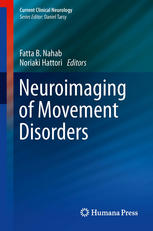

Most ebook files are in PDF format, so you can easily read them using various software such as Foxit Reader or directly on the Google Chrome browser.
Some ebook files are released by publishers in other formats such as .awz, .mobi, .epub, .fb2, etc. You may need to install specific software to read these formats on mobile/PC, such as Calibre.
Please read the tutorial at this link: https://ebookbell.com/faq
We offer FREE conversion to the popular formats you request; however, this may take some time. Therefore, right after payment, please email us, and we will try to provide the service as quickly as possible.
For some exceptional file formats or broken links (if any), please refrain from opening any disputes. Instead, email us first, and we will try to assist within a maximum of 6 hours.
EbookBell Team

5.0
88 reviewsIn the diagnosis and treatment of movement disorders, the use of neuroimaging has expanded widely and has been an exciting, important modality for unlocking the causes of abnormal motor control. With ever improving machinery, data collection techniques and analysis methods, researchers are now being presented with an exponentially increasing amount of data that they must wade through and interpret in the context of existing knowledge about movement disorders.
In Neuroimaging in Movement Disorders, the editors have produced a gold-standard resource that brings together an impressive international group of authorities in their respective fields to outline the current state of knowledge. Controversies, such as conflicting findings and methodological limitations, are covered and provide the reader with a comprehensive yet pragmatic understanding of the state of science. The chapters offer both comprehensive reviews of various neuroimaging methods and also more in-depth summaries of the contributions made by neuroimaging in individual movement disorders. Although many of the neuroimaging methods that are discussed have not been routinely used in clinical practice, the authors skillfully provide the reader with adequate detail to understand the requirements for using these methods and in some cases even the starting knowledge to begin local implementation. Neuroimaging in Movement Disorders is an indispensable reference that will be of value to all physicians and researchers involved in the care of patients with movement disorders.